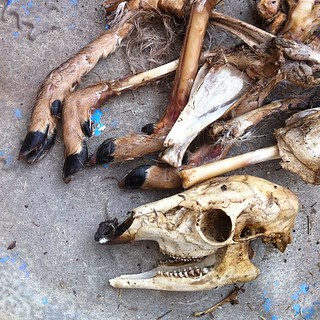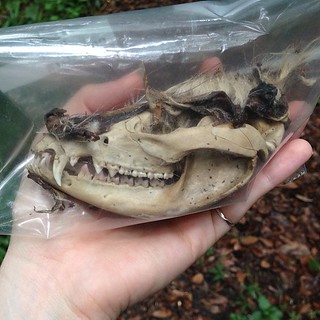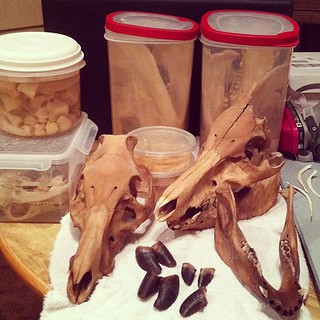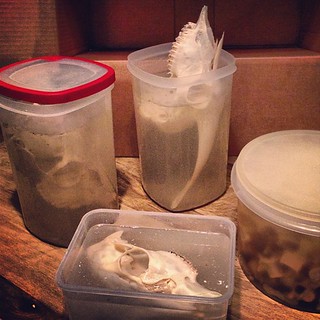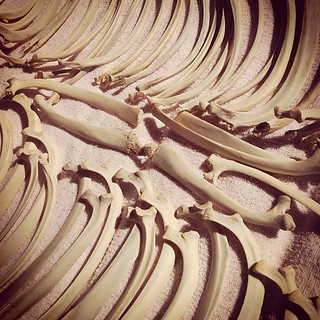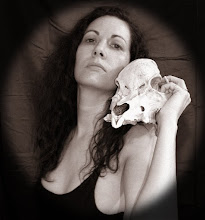A bit about me first, Jana Miller. I’ve been collection and processing bones and other things of nature for over 30 years. I’ve been making bone and teeth jewelry since the 1980s. For a long time I only made bone jewelry and art for myself and friends. In 2008, I became unemployed at no fault of my own. So I opened 3 Etsy shops. One of which is, BoneLust/Bone Lust, which offers bone jewelry/art to the public. Each piece is carefully made with love. Nothing is mass produced. I’m the only one working in my shops.

ABOUT THE BONES & OTHER ANIMAL BY-PRODUCTS USED IN MY PIECES:
I pride myself in NOT SUPPORTING industries that harm/kill animals and/or use their lives as profit. Like trappers, fur garment industries, pet breeders/shops, factory farming/meat industries, or medical research supply companies. "Not support" means I will not purchase any animal by-products from these industries.
I do use bones that hunters have dumped. I live in a very rural/poor area and these hunters feed their families this way and help control invasive species like wild boar. While I myself do not even eat meat (since 1993), beyond seafood about once a month. I’ve also been very active in animal rights, anti-vivisection, conservation efforts, etc. Donating thousands so far in my lifetime to related groups. And have personally rescued easily hundreds of creatures in my lifetime so far. Furry, feathered, insect, spider and otherwise.
99.9% of the bones and teeth used in my jewelry and art I’ve found myself. Then processed myself by the best means to provide you with a strong product that will last, and be sanitary to wear. I consider myself a professional as I’ve been collecting bones for over 30 years now. I do not like waste and honor the lives of these animals in my art/jewelry. I never have nor ever will harm or kill an animal, insect or plant for my bone collection or for the bones used/sold here. Also, all animal remains used in my shop were obtained by legal means approved by the U.S. Fish & Wildlife Service.

